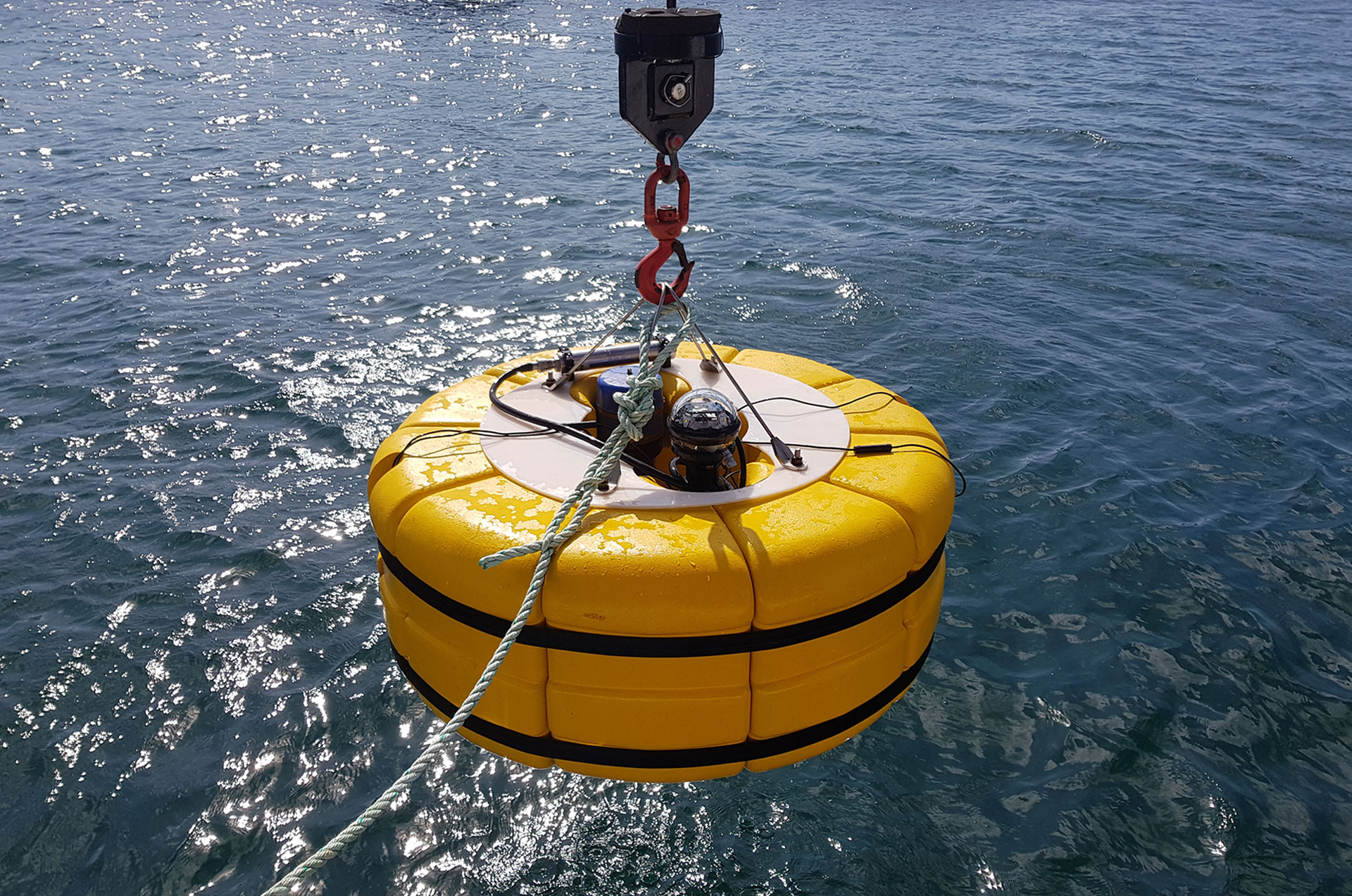Tender for an uncabled OBS solution for long-term deployment
In 2016, the Dublin Institute for Advanced Studies (DIAS) posted a tender to install a fixed, real-time broadband Ocean Bottom Seismometer (OBS) 200km off the coast of Ireland. This station was to be part of the Insitu Marine Laboratory for Geosystems Research (iMARL) network of underwater sensors, with a later integration to the Irish National Seismic Network (INSN). The INSN is operated by DIAS in collaboration with the Geological Survey Ireland.DIAS needed near-real time data transmission to record triggered events and make them available as part of the INSN database. Deploying a cabled system to the remote location in the North-East Atlantic would have been too expensive to be a realistic solution.
This is why Güralp collaborated with Sonardyne to design a whole new system, the Aquarius, capable of remote communication with the surface.
The objective was to equip the seismic station with the means to communicate not only positioning information and release signals, but also pre-defined packets of seismic data to the M6 weather buoy (see below). This buoy carries a variety of scientific equipment and is operated by the Marine Institute and Met Éireann.
Map showing the positions of the M6 buoy mooring and DIAS data centre. Inset 1: Zoom of area around buoy with colour representing density of buoy location from 19/07/19 to 19/09/19. Inset 2: Depth profile along black line shown on map. Inset 3: Rose plot of daily mean wave period against wind direction.
Güralp solution
The Aquarius system
The Aquarius+ system includes a triaxial, force feedback 120s to 200Hz seismometer with an adjustable long period corner and an absolute pressure gauge. The seismometer is uniquely capable of working at any angle which reduces the risks associated with a freefall installation.
The instruments are enclosed in a pressure vessel capable of withstanding depths up to 4000m, along with lithium-ion batteries to last up to 12 months underwater while transferring 10-15 Mb of data per month.
The instruments are enclosed in a pressure vessel capable of withstanding depths up to 4000m, along with lithium-ion batteries to last up to 12 months underwater while transferring 10-15 Mb of data per month.
Aquarius pressure vessel showing internal sensors, digitiser and battery packs
Acoustic telemetry for near-real-time data transmission without cables
The Aquarius+ is equipped with a directional acoustic transducer that can send an alert to the surface and then to shore. Data can then be requested from land for analysis.
A power efficient surface unit on the buoy can transmit relevant data to the shore via a satellite modem. The operator can select which set of data they wish to download or stream.
Following deployment, the operators are able to check the instrument’s state of health and the sensor performance. They can adjust the long period corner from the surface to suit the environment or if the OBS has landed in an unsuitable location, to retrieve and redeploy Aquarius+.
The unique benefit of the system is the ability to check whether the installation is successful at the outset of the monitoring period.
You can read more about the capabilities of the Aquarius and the other options available here.
The instruments are enclosed in a pressure vessel capable of withstanding depths up to 4000m, along with lithium-ion batteries to last up to 12 months underwater while transferring 10-15 Mb of data per month.
A power efficient surface unit on the buoy can transmit relevant data to the shore via a satellite modem. The operator can select which set of data they wish to download or stream.
Following deployment, the operators are able to check the instrument’s state of health and the sensor performance. They can adjust the long period corner from the surface to suit the environment or if the OBS has landed in an unsuitable location, to retrieve and redeploy Aquarius+.
The unique benefit of the system is the ability to check whether the installation is successful at the outset of the monitoring period.
You can read more about the capabilities of the Aquarius and the other options available here.
The instruments are enclosed in a pressure vessel capable of withstanding depths up to 4000m, along with lithium-ion batteries to last up to 12 months underwater while transferring 10-15 Mb of data per month.
Directional transducers, ocean bottom and topside.
References
- https://www.dias.ie/
- https://imarl.ie/fixed_obs/
- https://www.insn.ie/
- D. Craig, M. Smyth, L. Collins, M. Möllhoff, J.R. Grannell, C.J. Bean (October 2019). A Long-Term OBS Deployment in the North-East Atlantic with Real-Time Telemetry. Poster presented at the 2019 ORFEUS-EPOS meeting, Grenoble, France.
- https://imarl.ie/fixed_obs/
- https://www.insn.ie/
- D. Craig, M. Smyth, L. Collins, M. Möllhoff, J.R. Grannell, C.J. Bean (October 2019). A Long-Term OBS Deployment in the North-East Atlantic with Real-Time Telemetry. Poster presented at the 2019 ORFEUS-EPOS meeting, Grenoble, France.





